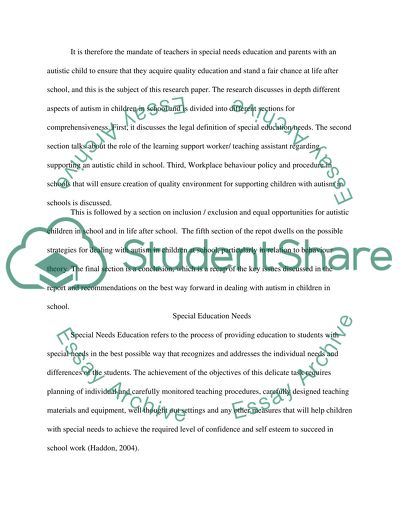Cite this document
(“Autism in a Child at School Essay Example | Topics and Well Written Essays - 2750 words”, n.d.)
Retrieved from https://studentshare.org/education/1492127-autism-in-a-child-at-school
Retrieved from https://studentshare.org/education/1492127-autism-in-a-child-at-school
(Autism in a Child at School Essay Example | Topics and Well Written Essays - 2750 Words)
https://studentshare.org/education/1492127-autism-in-a-child-at-school.
https://studentshare.org/education/1492127-autism-in-a-child-at-school.
“Autism in a Child at School Essay Example | Topics and Well Written Essays - 2750 Words”, n.d. https://studentshare.org/education/1492127-autism-in-a-child-at-school.


